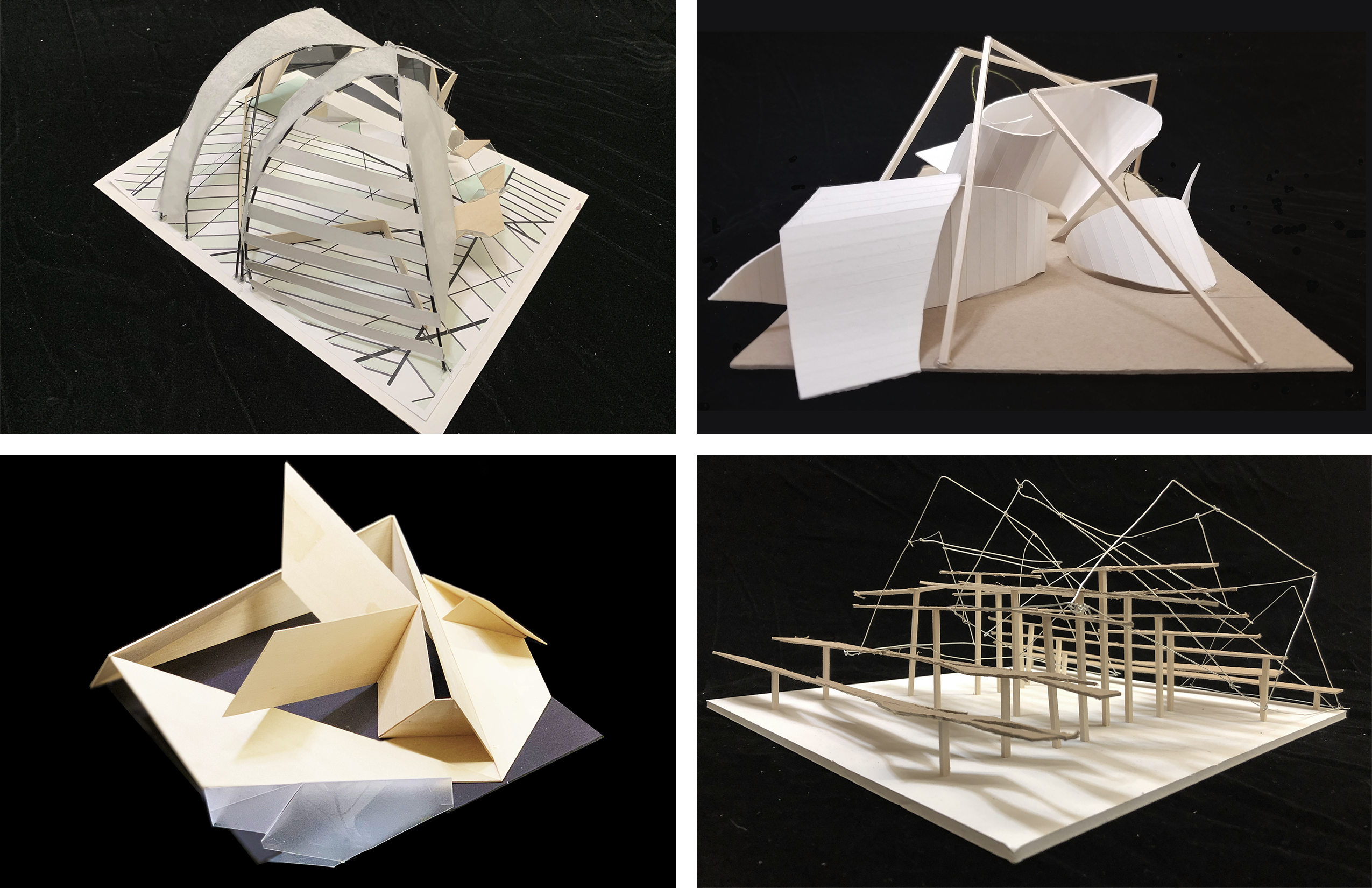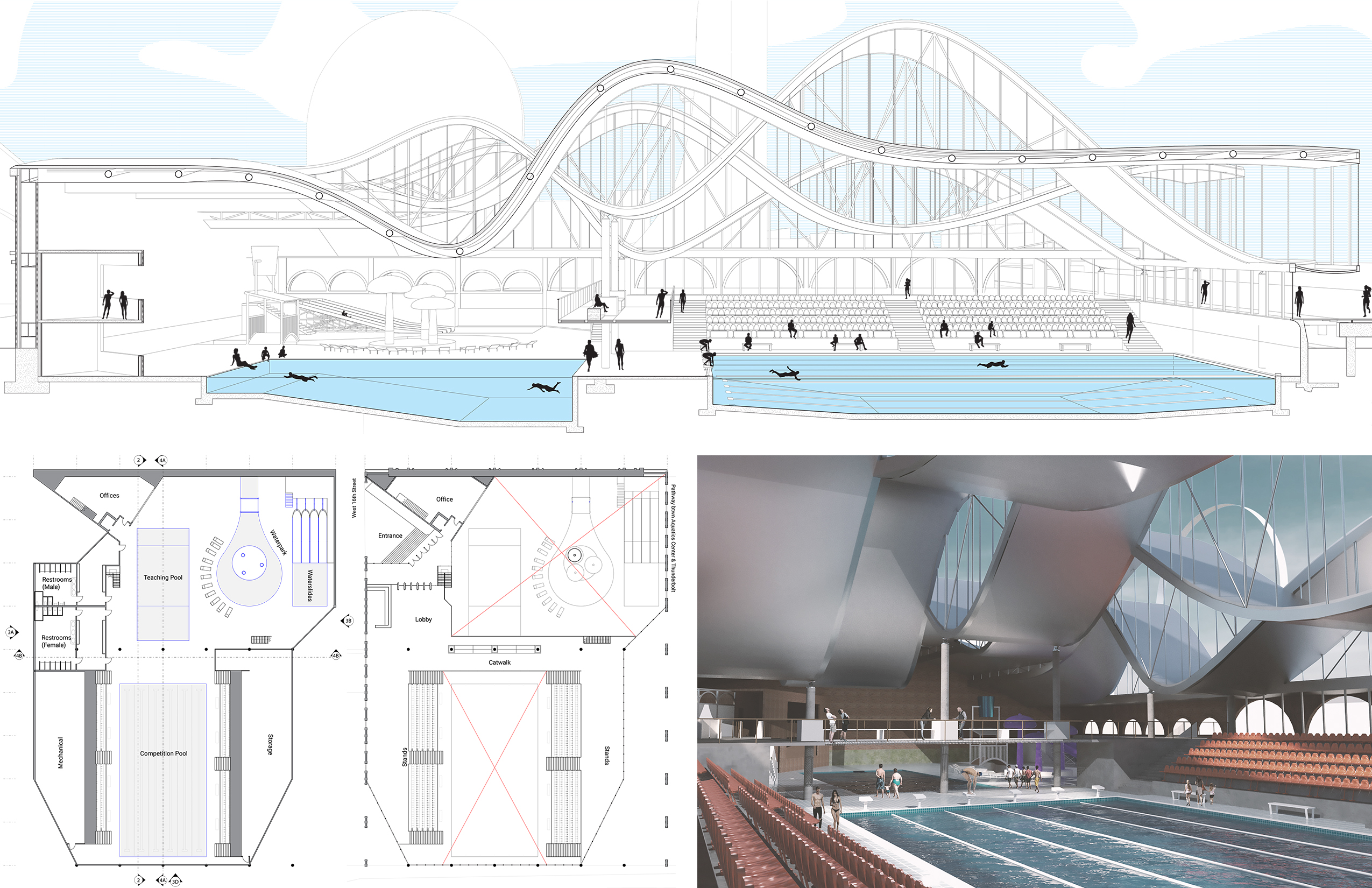The Shape of Water
Third Year Undergraduate Studio
City College of New York, Spitzer School of Architecture
Spring 2019
Studio Brief (text by Fabian Llonch, CCNY):This semester’s exercise is to design an Aquatic Center in Coney Island Brooklyn, NY. Students will explore this particular program, from concepts to construction details, and at a varies scales, with special focus on the surrounding environment and its particularities and the charged history of the place.
Students will learn how to integrate multiple systems in an architectural project, studying how these systems must be integrated in an overall concept, and how they can be represented and communicated by separating different bodies of information and addressing different scales. The emphasis of the design process is on the comprehensive negotiation between the conceptual and the material worlds.
The semester will elaborate on the integration of material systems and the consideration of construction methods within the design process. The most crucial element of investigation is the interrelationship of program, structure/tectonics, environmental stewardship, and the material formations that shape a building’s experiential space and surfaces. Life safety, egress and ADA requirements will be addressed within the conceptual framework.
Architectural Design is a complex matter, in which multiple factors and considerations have to be unified to make an artifact. Many of a building’s inherent qualities are based on the knowledge and masterful application of the “endoscopic” composition of its elements and layers. The understanding of how a building is put together is thus a
mandatory skill to have in order to create architecture.

(Work by Christina Chun, Francisco Cifuentes, Kimberlo Cueto, Isable, Flores, Johnoy Gordon, Jeffrey Gyemibi, Kami Loli, Joseph Maricevic, Mohommad Mostafa, Alicia Niebrzydowski, Francis Reynon, Brendan Smith, and Vicky Yuen)
Task 1, Interpretive Mapping (my text): Using data gathered from the site, along with multiple processes of transformation, students are to create highly abstracted, expressive mappings of the site. These mappings are an expression of their own inherent design interests and desires, and will be used to uncover information not yet known about the site.
This exercise is highly iterative. Students will make dozens of mappings before they select 3 to progress to the next phase. Further, each mapping must have a narrative of some sort (meaning decisions cannot be completely arbitrary). It is alright if the narrative is not clear when mapping begins, but it must be solidified at some point.

(Work by Kami Loli, Isabele Flores & Johnoy Gordon, Jeffrey Gyemibi & Mohommad Mostafa, and Francisco Cifuentes & Francis Reynon)
Task 2, Interpretive Modeling (my text): Students then translate your mappings into physical form. Students will test the possibilities of each of their final mappings, and choose the one with the greatest possibilities. You may combine elements from multiple mappings / models. The map is to be treated as a starting point, allowing the model to generate richer and more diverse relationships that both test initial theories and generate new questions. This model is not a precious object. It must cut, hybridized, and rebuilt as the ideas develop. As they work, students must pay attention to site cues such as scale and proportion. Like the mapping exercise, this should be highly iterative.

(Work by Kami Loli, Francisco Cifuentes & Francis Reynon, Joseph Maricevic & Brendan Smith, and Jeffrey Gyemibi & Mohommad Mostafa)

(Work by Francisco Cifuentes & Francis Reynon)
Task 3, Aquatic Center: Students will explore, from concepts to construction details, and at a varies scales, this particular program in a Coney Island site, with special focus on the surrounding environment and its particularities and the charged history of the place.

(Work by Francisco Cifuentes & Francis Reynon)

(Work by Isabele Flores & Johnoy Gordon)

(Work by Isabele Flores & Johnoy Gordon)